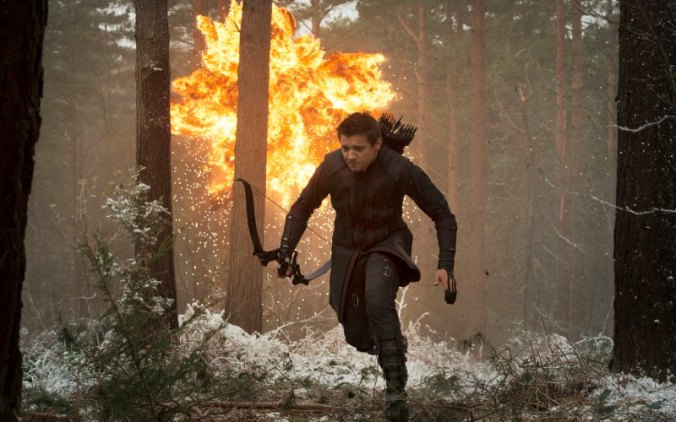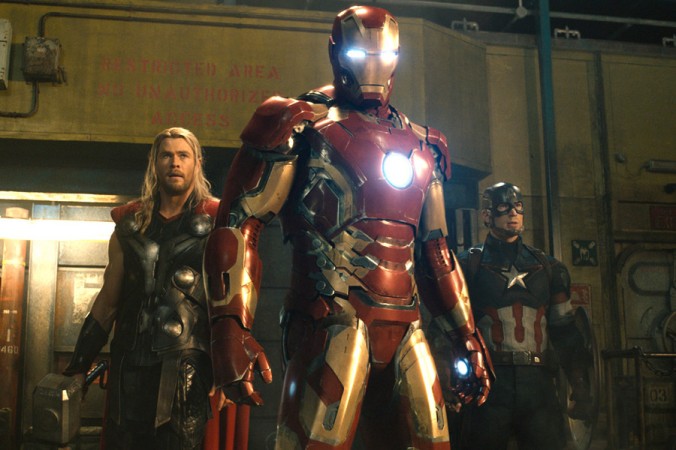Avengers: Age of Ultron is a great movie. It is not a great movie because there are a bunch of cool action scenes, or because of the funny quips and one-liners, nor is it because of how faithful it is the comics. No, The Avengers second cinematic outing is great because it draws upon the individual installments. I don’t mean that in the sense that HYDRA were exposed in Captain America: The Winter Soldier and Age of Ultron opens with the team fighting HYDRA. Age of Ultron is great because the characters are affected by what has come before.
This is most notably true with Tony Stark. In Iron Man 3, Stark was suffering from post-traumatic stress due to the battle of New York shown in the first Avengers film. Stark had become so concerned about another attack that he’d built forty two Iron Man suits. When past demons came back to haunt him, Stark deployed all of the suits, a remote controlled army. Though he initiated the clean slate protocol at the end of that film, it’s clear from Avengers:Age of Ultron that he’s far from cured of his PTSD. Iron Man has rebuilt his army, made up of Iron Man drones, naming it Iron Legion and he’s working on an AI to protect the Earth from outside threat.
Captain America and Thor get similar treatment. Cap is still the old fish out of water, reminiscing about Agent Carter and the life he left behind in Captain America: The First Avenger when mind jacked by Elizabeth Olsen’s Wanda Maximoff. When also tricked, Thor receives a vision of a tainted Asgard, possibly explained by Loki’s rule and to be further explored in Thor: Ragnarok. Even in terms of Wanda and Pietro Maximoff, their backstory involves being orphaned by bombs distributed by Stark Industries. And arms dealing was a lucrative business for Stark not so long ago.
It’s not a retreading of past stories though. Some of the characters get completely new developments, namely Clint Barton. Hawkeye spent most of the first film unappreciated due to his brainwashing and generally just having less to do in the battle of New York. That’s been more than rectified here in Age of Ultron where we get to see a lot more of what Barton does when he’s not an Avenger. It’s a quieter moment in the film but it’s great character growth and brings a rather ‘meh’ character to life.
The main thrust of the story is that Tony Stark and Bruce Banner attempt to create an A.I. to protect Earth using information and coding extracted from Loki’s sceptre. This A.I. is called Ultron and, in true science fiction fashion, immediately assesses that the best way to save humanity is to wipe it out. He enlists the Maximoff twins to his cause but doesn’t divulge his end game. Turns out he’s quite obsessed with comets, desiring to lift a land mass out of the Earth and drop it to create an extinction level seismic blast.
Ultron does not pose much of a threat to The Avengers. They square off several times before the final battle and each time the Avengers succeed in destroying him. The problem is that he escapes using the internet, allowing him to move into a new body and continue his plans. Part of those plans are to create a better body, a more synthetic model, utilising new skin constructing technology and the mind gem. But even those plans are headed off by Tony Stark and Thor. It’s nice to see the heros being as proactive as the villain for once. The only real exception is Steve Rogers who warns that ‘everytime someone tries to win a war before it starts innocent people die’. Is that perhaps a dispute that could lead to a civil war?
It’s those little character moments that make the film, whether it’s building on what has come before or feeding into the next installments. But it’s also these moments that create a darker atmosphere in the Marvel universe than fans might be use to. Iron Man 3 and Thor: Dark World (ironically) were lighter and more jokey than Captain America: The Winter Soldier and Avengers: Age of Ultron. The main theme this time around is that our heros are monsters, capable of hurting the world as much as they are of saving it. Isn’t that the same theme DC were going for in their Batman V. Superman trailer? Age of Ultron does it without the gritty, dark palette and gruff garbled voices. It does so with the deep, alluring tones of one James Spader.
Is it better than the first film? That’s tough to say. The Avengers was the first of its kind. No film before it had created a shared universe and built towards an ensemble film. It was fun without being overly complex, which it needed to be in order to appeal to casual fans and not just the fanatics who watched every film and obsessed over every scene. But it did have it’s flaws, as does Age of Ultron. One thing that bothered me a lot was the CGI which was very noticeable at times. I don’t think Age of Ultron is much more CGI heavy than the first outing but it didn’t seem to blend quite right. But that’s only a slight grievance.
Even with it’s failings and comparisons to the first, Avengers: Age of Ultron is still a great film in its own right. Far too often, sequels will attempt to draw fans in with bigger and bolder stories at the expense of the characters who become stereotypes and cliches drawn with broad strokes. Not so with Age of Ultron, which moves from alien invasion to robotic uprising but remains underpinned by character development and growth throughout. Now, on to Ant-Man and phase three.







